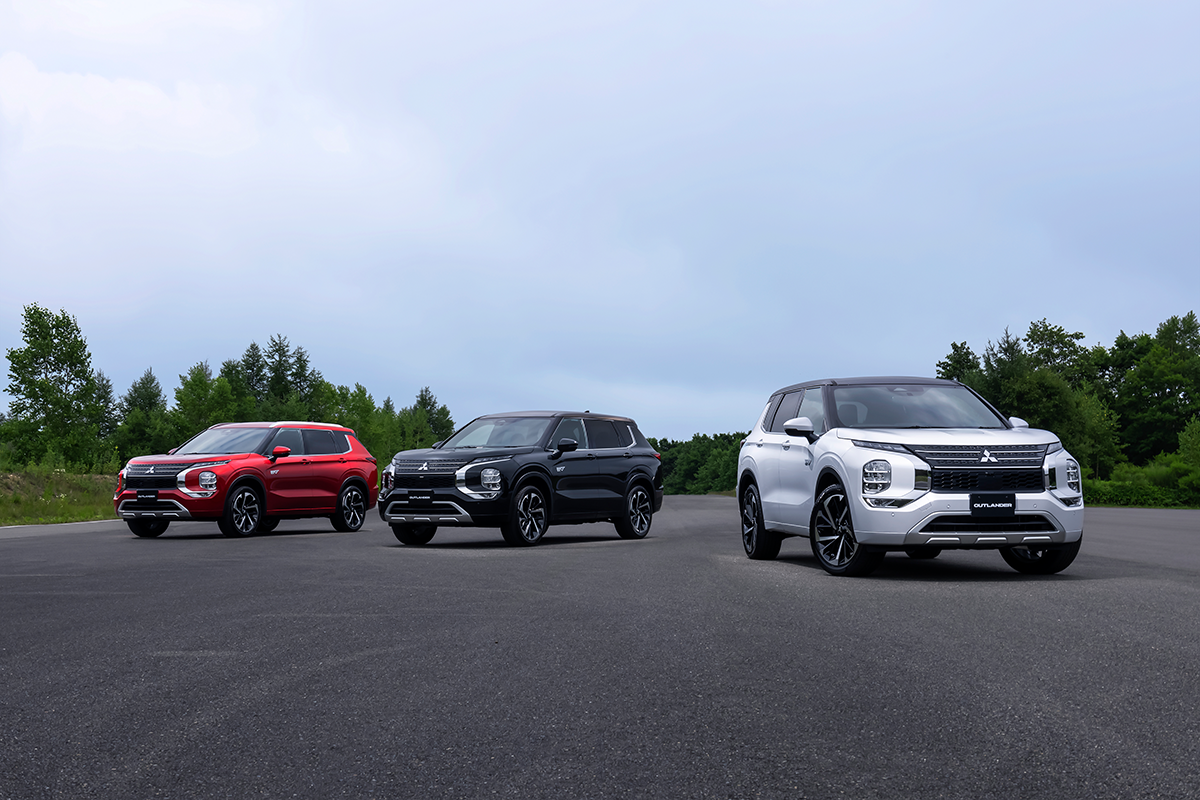Electric-assisted Outlander priced for rebate
/Three versions are coming but exactly when remains a mystery.
ELIGIBLITY for Government’s Clean Car discount lands with all versions of next year’s plug-in hybrid version of the Mitsubishi Outlander – though the flagship just squeaks in, with $10 to spare.
In announcing today that it will take the car in three levels of trim – base $69,990 LS (which, for a limited period, will sell for $59,990), mid-level $75,990 XLS and top-drawer $79,990 VRX - Mitsubishi Motors New Zealand has yet to define when the plug-in electrics will arrive, except to indicate that the first shipment is due in early 2022.
Seat counts are as per the pure petrols, meaning five chairs for the LS and seven for the more expensive models.
In announcing this pricing, it has also reminded it is now taking orders, with more than 100 already accrued.
As previously reported, the new model will come with a big increase in battery capacity and electric driving range; MMNZ cites an optimal of 84 kilometres’ pure electric range, against 55kms’ from the outgoing model.
The Outlander has already become available in orthodox petrol versions, in front- and four wheel-drive formats, spanning the same three grades as the PHEV.
The front-drive fully petrol editions are $41,990, $44,990 and $49,990 and those with all-wheel-drive, a feature also standard to the PHEV, are $44,990, $49,990 and $54,990. Those prices do not include on roads.
The Clean Car Discount amounts to a PHEVs amounts to a $5750 saving on recommended retails where applicable. The ceiling for the rebate is $80,000.
The new Outlander PHEV is now built on a Nissan underpinning and that brand also seems to be the source for the battery, which produces 20kWh, up from 13.8kWh in the version that has been a top seller here.
If proven accurate, the electric driving range puts the model ahead of all PHEV rivals on sale in NZ, including the next-size-up Kia Sorento.
The pure electric range is measured to worldwide light vehicle test cycle requirement.
The output of the front and rear motors has increased by 40 percent.
The electrics are married to a 2.4-litre four-cylinder petrol engine with 185kW maximum power, up from 130kW, and 450Nm maximum torque, up from 332Nm.
The PHEV engine’s provenance is not clear, but the previous PHEV also ran a 2.4-litre. The fossil-fuelled variants have a Nissan-provisioned 2.5-litre non-turbo four cylinder developing 135kW and 245Nm. That’s up 15kW/25Nm over the outputs for the line they replace.
MMNZ said today the electric-assisted model has a 56 litre fuel tank, so 24 percent bigger than the outgoing car’s.
The parent brand recently stated an increase of around 40 percent in the output of the front and rear motors and drive battery allows the car to keep driving in EV mode and avoid starting the engine as much as possible “even when pressing hard on the accelerator.”
It says the new electric component assures sufficient driving range even when using functions such as the air conditioner, while at the same time helping to reduce the frequency of charging.
The power drive unit for the front motor is newly equipped with a booster function which bolsters driving force by raising the supply of voltage to the front motor while simultaneously improving electricity consumption by raising the efficiency of the generator.
Unifying the rear motor with the control unit also secured enough floor space to install a third row of seats, enabling a seven-passenger seating layout. Installing the control unit on the outside of the passenger compartment has also helped to shut out high-frequency noise for superior quietness.
Single pedal operability is also enroute, with the make saying “a newly added pedal operation mode makes it possible to both accelerate and decelerate just by controlling the accelerator pedal.”
It explains the accelerator pedal alone can exert proper braking force with no need to switch to the brake pedal when decelerating, “so drivers can concentrate on steering and have more peace of mind in slippery surfaces such as snowy roads and reduce the fatigue caused by switching pedals.”
The Super-All Wheel Control (S-AWC) integrated vehicle dynamics control system, based on a twin-motor 4WD system with one drive motor in front and another in the rear, has a new brake Active Yaw Control (AYC) function for the rear wheels.
This allows the system to distribute the driving force to the front and rear wheels optimally according to road and driving conditions, while torque vectoring by controlling the brakes on the left and right wheels is also possible for the front and rear wheels.
Seven drive modes can be selected depending on road surface conditions and driving style. Normal is the basic mode, optimised for normal driving on paved roads. Tarmac mode provides brisk acceleration response and high-cornering performance, again on dry paved surfaces. Gravel mode, snow mode and mud mode are self-explanatory.
There’s a Power mode, which “delivers powerful acceleration when needed,” and Eco mode “which prioritises economic and environmentally friendly driving.”
MMNZ has yet to release full specifications, but says LS will have dual zone climate control, a reversing camera, front and rear parking sensors and a nine-inch smartphone-link display audio screen, while the XLS has black synthetic leather upholstery, smartphone wireless charging and three zone automatic climate control. VRX has memory leather seats, a Bose sound system with nine speakers, 1500w AC power outlets, multi-around view mirror, a kick tailgate and a 10.8-inch head-up dash display.
Equipment levels announced in Japan include MI-PILOT7 single-lane driver assistance technology for highways. This integrates Adaptive Cruise Control (ACC) and Lane Keep Assist (LKA) to assist the driver in maintaining distance between vehicles while keeping in the centre of the lane. It also detects speed limit signs and automatically adjusts the set speed accordingly. A navi-link involvement utilises map data to automatically adjust vehicle speed as needed according to the mapped road layout; but seems specific to motorways.



















